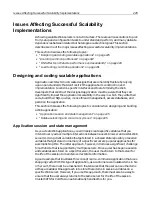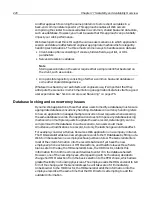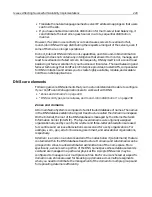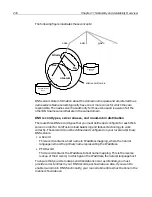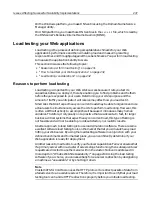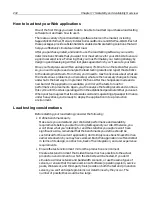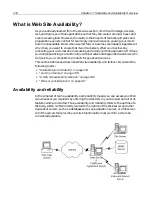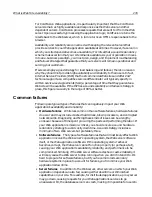
222
Chapter 11 Scalability and Availability Overview
What is Scalability?
As an administrator, it’s likely that you often hear about the importance of having
Web servers that scale well, but what exactly is scalability? Simply, scalability is a Web
server’s ability to maintain a site’s availability, reliability, and performance as the
amount of simultaneous Web traffic, or load, hitting the Web server increases.
The major issues that affect Web site scalability include:
•
“Performance” on page 222
•
“Load management” on page 224
Performance
Performance refers to how efficiently a site responds to browser requests according
to defined benchmarks. Application performance can be designed, tuned, and
measured. It can also be affected by many complex factors, including application
design and construction, database connectivity, network capacity and bandwidth,
back office services (such as mail, proxy, and security services), and hardware server
resources.
Web application architects and developers must design and code an application with
performance in mind. Once the application is built, various administrators can tune
performance by setting specific flags and options on the database, the operating
system, and often the application itself to achieve peak performance. Following the
construction and tuning efforts, quality assurance testers should test and measure
an application’s performance prior to deployment to establish acceptable quality
benchmarks. If all of these efforts are performed well, consequently you are able to
better diagnose whether the Web site is operating within established operating
parameters when reviewing the statistics generated by Web server monitoring and
logging programs.
Depending on the size and complexity of your Web application, you may be able to
handle anywhere from 10 to thousands of concurrent users. The number of
concurrent connections to your Web server(s) will ultimately have a direct impact on
your site’s performance. Therefore, your performance objectives must include two
dimensions:
•
the speed of a single user’s transaction
•
the amount of performance degradation related to the increasing number of
concurrent users on your Web servers
Thus, you must establish desired response benchmarks for your site and then
achieve the highest number of concurrent users connected to your site at the desired
response rates. By doing so, you will be able to determine a rough number of
concurrent users for each Web server and then scale your Web site by adding
additional servers.
Once your site runs on multiple Web servers, you will need to monitor and manage
the traffic and load across the group of servers. See “Hardware planning” on page 237
and “Techniques for Creating Scalable and Highly Available Sites” on page 239 to
learn about the ways you can do this.
Содержание COLDFUSION 5-ADVANCED ADMINISTRATION
Страница 1: ...Macromedia Incorporated Advanced ColdFusion Administration ColdFusion 5...
Страница 20: ......
Страница 56: ...38 Chapter 1 Advanced Data Source Management...
Страница 74: ...56 Chapter 2 Administrator Tools...
Страница 76: ......
Страница 86: ...68 Chapter 3 ColdFusion Security...
Страница 87: ...To Learn More About Security 69...
Страница 88: ...70 Chapter 3 ColdFusion Security...
Страница 130: ...112 Chapter 5 Configuring Advanced Security...
Страница 132: ......
Страница 154: ...136 Chapter 6 Configuring Verity K2 Server...
Страница 162: ...144 Chapter 7 Indexing XML Documents...
Страница 202: ...184 Chapter 8 Verity Spider...
Страница 236: ...218 Chapter 10 Verity Troubleshooting Utilities...
Страница 238: ......
Страница 348: ...330 Chapter 14 ClusterCATS Utilities...
Страница 349: ...Using sniff 331...
Страница 350: ...332 Chapter 14 ClusterCATS Utilities...
Страница 362: ...344 Chapter 15 Optimizing ClusterCATS...
Страница 372: ...354 Index...


















